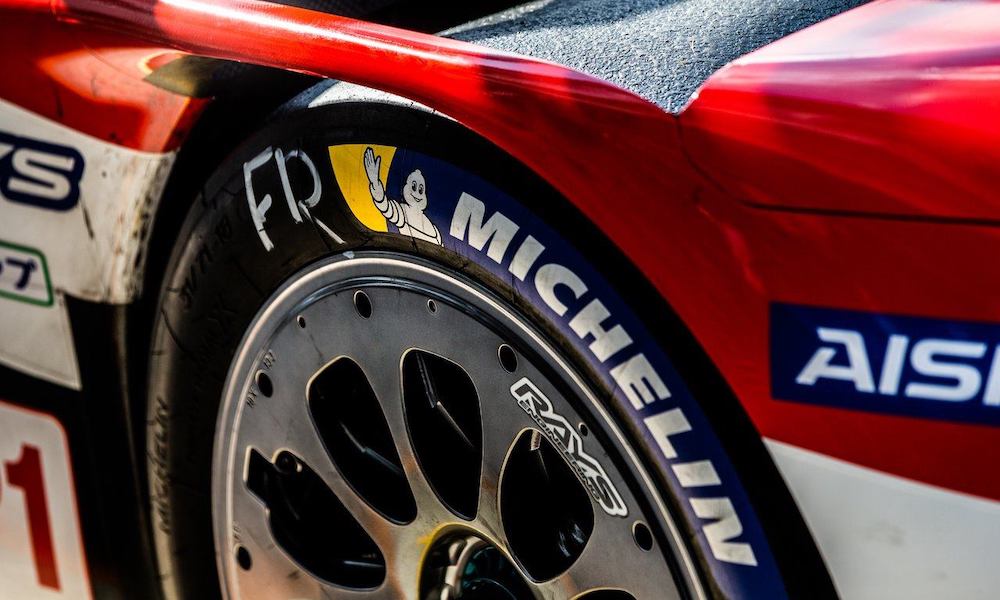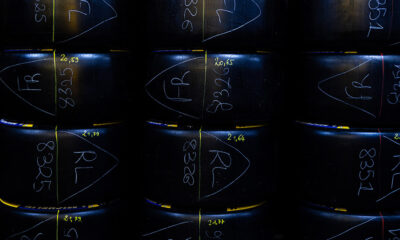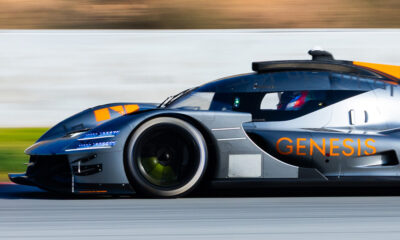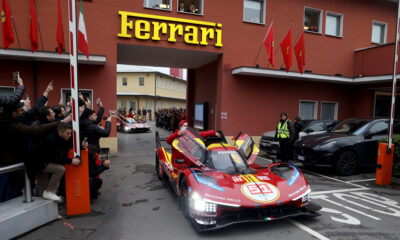
Photo: Michelin Motorsport
Michelin is prepared to “sacrifice a bit of endurance” with its Le Mans Hypercar tires in the first season of the FIA World Endurance Championship’s new formula next year.
The French supplier’s head of motorsport Matthieu Bonardel told Sportscar365 that the short window between the start of track testing and the first race of 2021 at Sebring next March is presenting challenges with the final development of its second tire family.
Michelin is creating two tire ‘families’ as part of is exclusive LMH supply deal, with one covering cars with the same front and rear tire sizes – such as the four-wheel-drive Toyota hybrid – and the other covering cars with different-sized front and rear profiles.
Bonardel admitted that Michelin may need to sacrifice LMH tire longevity in 2021 as it focuses on ensuring the new Hypercars can consistently lap quicker than LMP2s.
However, he expressed confidence that the 2022 WEC season’s product will achieve optimal performance in terms of both pace and endurance.
“Given the huge time challenge that we [have] had to face, we told [the Automobile Club de l’Ouest] that we will go for safety and balance,” said Bonardel.
“We should have the right performance because we don’t want an LMP2 to beat a Hypercar, even though they will be two seconds a lap slower.
“We may, in the first year, have to sacrifice a little bit of endurance, meaning that it’s not clear right now whether we can go four stints in the first year with this generation of tire.
“If we can do two stints, that’s going to be good. We will try, but at some point you have to choose your priorities.
“We have also agreed that if it’s a disaster after the first race and nobody is happy, we have the possibility to add another spec later. We can push that button quite calmly.
“In the second year, we should be able to provide a next-generation tire which will be much better, in terms of overall performance and endurance. We do the best we can to provide a great tire for the first year, and we’re going to have a fantastic tire for the second year.
“The first family of tire, which is the one for Toyota, is ready. Simply because the Toyota is ready. We are done with the design, fabrication and virtual and physical testing.
“Now it’s ready to hit the ground, but it’s not necessarily ready for the season. Hitting the ground will mean it going through the hands of a human. But we are pretty confident with the basics, the safety and the physics of it.
“We still have time to do some small adjustments before Christmas. The final version will have to be frozen by January if we’re going to be ready by Sebring.”
Bonardel said that the second family of tires is “completely new”, giving Michelin more development work to carry out compared with the family used by Toyota.
The Toyota LMH car is set to roll out for the first time this month, while the team has highlighted Jan. 11 as the public reveal date for its latest WEC and Le Mans challenger.
Glickenhaus, which is using the second family, has bookmarked Jan. 5 for the initial rollout of its non-hybrid SCG 007 Hypercar, which has gone through its scale wind tunnel testing program and is understood to be heading into the build phase next month.
“They’re a new mould, new size, never been used, whereas the Toyota is based on the current size, so we are familiar,” said Bonardel, talking about the second tire family.
“We made some profile changes, but we have started from an existing base and are reshaping it.
“For the other guys [Glickenhaus and ByKolles] we’re going to start with completely new tires on the front and rear. It takes years to balance the component architecture.
“Here we are really shooting in the dark, because we have 30 years’ experience but we have a new car, a new front tire and a new rear tire. We are betting as good as we can with our expertise.
“The main difference for us is the different sizes between front and rear. It’s a one or two percent difference in weight distribution.
“Compound-wise we are good, we know how to handle that. Safety-wise, no problem, because we have a machine that can tell us if it lasts one, two or three stints. It’s just a matter of balance and how the front and the rear work at these sizes.
“We believe our expertise in terms of simulation. Then comes the time of reality on the ground [when] you wait for the comment from the driver about if it’s good or not. This is going to happen with these cars in January.”
Bonardel said the proximity of the proposed Glickenhaus rollout in January to the 2021 WEC kick-off in March presents a “challenge” in terms of tire testing and feedback.
After rolling out, Glickenhaus is expected to head to Spain for an endurance test program for its Hypercar that is being assembled at Podium Advanced Technologies in Italy.
While the Hypercar class is set to debut in the 1000 Miles of Sebring, the formula was originally supposed to race for the first time at Silverstone last month, before the coronavirus pandemic prompted the WEC to adjust its schedules and season format.
“[By] January we do the best we can to have something which is ready to race by Sebring,” said Bonardel.
“If Sebring gets canceled or delayed, this is probably a good help to be ready for the second tire. This is the one which is going to be a challenge, first for them and then for us.
“How do you freeze, develop and confirm the tire registration if the car is not good in terms of performance? Then the [constructor] says, ‘I will change this and that’. This is the one which is riskier.
“With the Toyota, it’s not going to be a piece of cake, but we are confident.”























